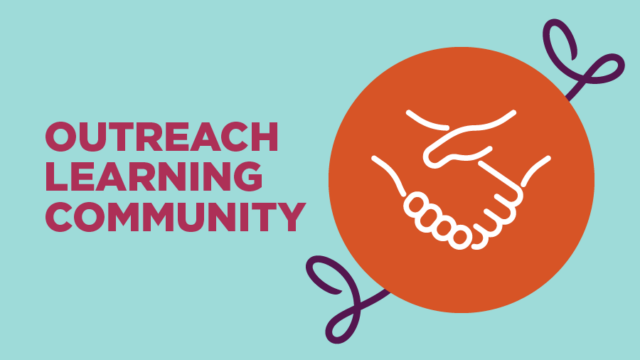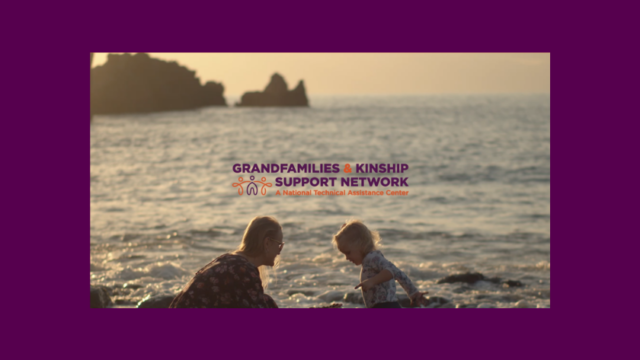
Introduction
In recent years, record numbers of unaccompanied immigrant children (UC) have crossed into the United States. Between 2017 and 2022, over 385,000 UC were apprehended crossing U.S. borders. This special population of immigrants are defined as children under the age of 18 who cross into the United States with no lawful immigration status and with no parent or legal guardian in the United States who is immediately available to provide care. Their reasons for coming are vast and include flight from violence, gangs, and/or economic instability and/or efforts to rejoin family that is already in the U.S. They travel to the Mexico/U.S. border alone, with smugglers, or in groups, some arriving with siblings, relatives, and/or children of their own.
Who are unaccompanied immigrant children?
These children tend to be teenagers, are disproportionately male, and overwhelmingly arrive from Central America.


36% are female

47% Guatemala
29% Honduras
13% El Salvador
11% other
What happens when unaccompanied immigrant children arrive in the U.S.?
The subsection below shows a general overview of the process that unaccompanied immigrant children experience once they enter the U.S. However, it is important to acknowledge that each child’s story is unique and, during times when a large number of immigrants are arriving at the border, they may experience delays and longer stays in custody. The Office of Refugee Resettlement (ORR) is the primary government agency responsible for their immediate care and for locating an appropriate sponsor to whom to release them.
The “typical” pathway for UC from arrival to release takes approximately 30 days from start to finish
Child crosses the U.S./Mexico border
Apprehended by Homeland Security & Border Patrol
Receives initial screening of eligibility to remain in the U.S.
Transferred to ORR custody within 72 hours
Placed in an ORR shelter
ORR locates, screens, and coordinates placement with a sponsor
Released from ORR custody once sponsor accepts transfer of child
The information above is based on information from the National Immigration Forum’s Fact Sheet: Unaccompanied Migrant Children (UACs) and a flowchart from the U.S. Department of Health and Human Services.
The Critical Importance of Kin for Unaccompanied Immigrant Children
What happens to these children post-release is of critical importance to kinship and grandfamily programs across the country. While many of these children are soon reunited with and released to parents who are already in the U.S., upwards of 60 percent are released to sponsors who are kin. Once released, unaccompanied immigrant children reside in communities throughout the U.S, with certain states, such as Texas, California, Florida, and New York, receiving higher numbers. To learn more, see the state and county data that is available from the U.S. Department of Health and Human Services.
The terms “grandfamilies” and “kinship families,” used throughout this document, refer to all families in which kin – grandparents, other relatives, or close family friends – are raising children whose parents are unable to do so. The terms can be used interchangeably to refer to these families.
60% of unaccompanied immigrant children are released to kin
Unique Challenges of Kinship Families of Unaccompanied Immigrant Children
Like all kinship families, kinship families of unaccompanied immigrant children need support in managing the challenges that come with caring for the sudden and often unexpected placement of a child. Kinship families caring for unaccompanied immigrant children face compounded challenges, including restricted access to supports and services to help the children, language barriers, and fear of government agencies. This section highlights some of the common needs of unaccompanied immigrant children and their kin caregivers. However, it is not an exhaustive list. To learn more about this population, view the “Resources” section below.
Read more about the challenges faced by kinship families with members who are immigrants in a report by Generations United, “Love Without Borders: Grandfamilies and Immigration.”
Legal
Kin caregivers of unaccompanied immigrant children will likely need access not only to immigration attorneys to help the children in immigration court but also to family lawyers who can help them gain custody or other legal rights so they are able to make medical and education decisions. In addition, family court involvement is necessary for certain pathways to citizenship.
Finances
Many kin caregivers may not have access to every public benefit due to their or the children’s immigration status. Additionally, the “public charge” rule can prevent individuals deemed “likely to become primarily dependent on the government for subsistence” from obtaining lawful permanent residence status. Fear of this rule may prevent caregivers from accessing supports they could qualify for. However, it is important to note that the “public charge” rule does not apply to all benefits. For example, nutrition programs, the Children’s Health Insurance Program, and most Medicaid benefits are exempt from consideration under this rule, meaning that noncitizens can receive those benefits and still be eligible for lawful permanent residency. To learn more about the “public charge” rule, see this press release.
Physical & Mental Health
Many unaccompanied immigrant children previously lacked access to primary care and have unmet health needs. Immunization records for school enrollment are often not available, requiring the child to receive many vaccinations over again. The experience of trauma in their home country, on their journey to the U.S., and as they navigate their new life may lead to a need for mental health support with providers who have specialized training with this population.
Housing
If kin placements themselves are immigrants or undocumented, they may have challenges obtaining housing due to things such as a lack of a credit score, bank account, and/or social security number. In addition to the financial strain, this could be a barrier if a larger home is needed to help care for their new placement.
Education
Many unaccompanied immigrant children have had limited or interrupted education, meaning that, in addition to needing language support in school, they may need credit recovery and academic support to catch up to their peers and obtain a high school diploma or GED.
Child Welfare
Unaccompanied immigrant children are typically placed with kin without child welfare involvement, making them ineligible for foster care maintenance payments or kinship stipends. Anecdotal information indicates that some unaccompanied immigrant children end up in foster care after placement with their sponsor due to their sponsor no longer being able to care for them or family conflict. The caregivers may be hesitant to proactively reach out for support due to mistrust or fear of government involvement.
Steps to Explore How Your Kinship Program Can Support Kinship Families of Unaccompanied Immigrant Children
- Connect and learn. The first step in expanding your program to serve a new population should always be to connect with advocates and other groups in your community that are already working with this population. Your community likely already has organizations serving immigrant families. Learn from them about service gaps and how your program might be of support to existing programs.
- Assess the needs in your community. Complete a thorough needs assessment in your community and identify the gaps in services for immigrants specifically. You can access data from ORR to determine how many unaccompanied immigrant children are being released into your state and county to understand more about the potential size of the population. Organizations already providing support to immigrants may be overloaded with cases and have a need for more capacity support. For instance, assisting immigrant families with filling out paperwork or making calls to locate a medical provider could support the family navigating new systems and also help case managers working at immigration organizations who are managing a sudden influx of clients.
- Develop expertise. Develop specialized knowledge about this population. If you have kinship navigators or case managers, you might consider having someone specialize in this population and have them work on developing their expertise. Your program will need to have a deep understanding of the citizenship eligibility requirements of services in your community. If your program includes legal assistance, make sure your providers have training on the legal needs of this population and connections to immigration attorneys for consultations.
- Create culturally responsive services. It is likely that your existing services will need to be assessed and adapted to serve kinship families of unaccompanied immigrant children. Use care to ensure that your services are culturally responsive. All steps of your program and services should be reviewed. For instance, intake conversations should avoid direct questions about a family’s immigration status. It will also be necessary to provide resources and support in the person’s native language. While Spanish will be the most common language for this population, other languages are used, including indigenous languages for which it may be more difficult to find translators. Learn more about providing culturally responsive services by reading the Generations United toolkit, “Latino Grandfamilies: Helping Latino Children Thrive Through Connection to Culture and Family.” As a part of the service design process, make sure you include the voices and feedback of those closest to the issue, the kinship caregivers and unaccompanied immigrant children themselves.
- Build relationships and a referral process. Making your kinship programs and services known to kinship families of unaccompanied immigrant children will take strong relationships in the community and a referral process that helps the families connect with your program through trusted sources. It may be necessary to adapt the words and names you use to ensure that your program resonates with families. For instance, when translated into other languages, “kinship” may not convey the same meaning.
Resources
Many local resources and groups may exist in your community. Below is a list of some national resources that can be used to learn more.
General
- The Center for Immigration and Child Welfare has up-to-date information, news, and research on immigrant families involved in the child welfare system.
- The ORR website provides information on programs for unaccompanied immigrant children, data, definitions, and terms.
Legal
- The American Bar Association’s Unaccompanied Children & Immigration 101 page provides webinars on legal status options and trauma-informed legal service.
- Kids in Need of Defense (KIND) provides legal and social support services to unaccompanied immigrant children. KIND also has policy updates, stories, and other resources on their website.
Mental Health and Wellbeing
- Girasol is an organization creating a global community of support for the well-being of all immigrant families. Their website includes guides on trauma-informed care and workbooks for unaccompanied immigrant children. The organization also conducts trainings and consultations on trauma-informed care.
- The National Traumatic Stress Network has a resource for understanding the mental health needs of unaccompanied immigrant children.


